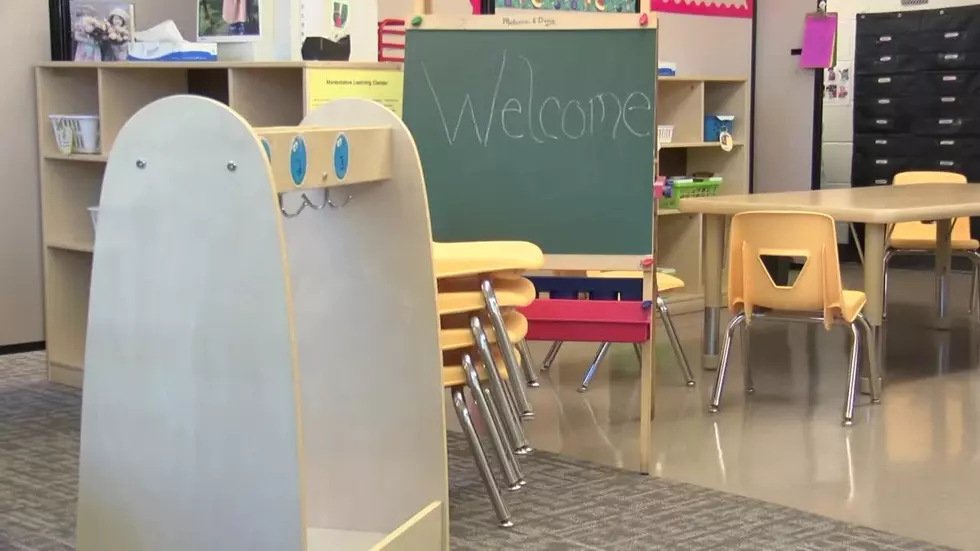
Oregon lawmakers seek to expand sorely needed child care facilities
Ben Botkin
(Oregon Capital Chronicle) With a shortage of child care options in Oregon, state lawmakers want to put $100 million into a new program to increase capacity.
House Bill 3005 is aimed at child care providers who want to expand but cannot get the financing. It would create a new $100 million fund to be available during the next two years to child care providers who are planning renovations, expansions and new building projects to serve more children. The fund would be managed by the Housing and Community Services Department, the state’s housing agency, and the money would be provided as grants or loans.
The state needs more providers, especially now. The industry was struggling to meet the demand before COVID-19, but today there are fewer providers, especially for children aged 3 and 4 because providers shut down or scaled back operations during the pandemic.
“The child care sector does face a crisis of available, affordable child care across the state,” Alyssa Chatterjee, director of Oregon’s early learning system, told the Capital Chronicle in a statement.
Sixty percent of Oregonians are in a child care desert, or a region that either has no child care or lacks options, according to a report by Center for American Progress, a nonprofit, nonpartisan think tank. The center considers a Census tract with more than 50 children under age 5 with no provider or not enough providers to be a child care desert.
Studies show that child care benefits families and children. In preschool programs, children get a jump on their education and are better prepared for success later on. And child care gives parents the opportunity to work outside the home, boosting their incomes and quality of life.
Bipartisan support
“Please remember child care is a profession that makes all professions possible,” Sen. Dick Anderson, R-Lincoln City and a sponsor of the bill, said in a presentation to the House Committee on Early Childhood and Human Services. Rep. Lisa Reynolds, D-Portland and the committee chair, is the bill’s chief sponsor.
Child care providers and advocates say the bill would give more children a good start.
Head Start currently serves about 12,000 low-income Oregon children in free pre-kindergarten programs. But hundreds of other families could send their children to this program if there was more classroom space, Justen Rainey, a lobbyist for Oregon Head Start Association, told lawmakers in submitted testimony.
“Operating costs have significantly increased, workforce and labor shortages are impacting early learning programs, and many Head Start programs don’t have adequate facility space to expand and serve more children,” Rainey wrote.
The need for classroom space increases when programs expand, said Darcee Kilsdonk, executive director of Clackamas County Children’s Commission, which serves about 800 children.
A classroom can serve 40 children with two half-day sessions, she said. “However, when we increase that time to a full day experience in order to maximize a child’s potential for school readiness and to support the families’ child care needs, we can only serve 20 children in that space,” Kilsdonk said.
Public funding would help providers attract private investors, said Kali Thorne Ladd, CEO of the Portland-based Children’s Institute, an advocacy group.
Child care advocates and providers also are supporting another bipartisan proposal, House Bill 2727, which would create a workgroup to look at strategies for expanding facilities in the state. The proposal aims, in part, to help providers navigate complex zoning and code requirements, which can pose a challenge to opening a new facility.
State program expands eligibility
Officials at the Oregon Department of Human Services acknowledge that Oregon needs more child care programs. This month it expanded eligibility for child care services under the Employment Related Day Care program for working parents. Under the expansion, students in high school, a GED program or college no longer need to work to qualify for child care assistance.
The program helps eligible families with the cost of care. The latest data show that more than 10,000 families and nearly 18,000 children benefited from the program in November, according to Jake Sunderland, the department’s press secretary. Nearly 60% were up to 5 years of age and about 40% were aged between 6 and 12. The rest were up to 17 years old.
Families are authorized for a certain number of child care hours a month, with a maximum of 40 hours a week. The average subsidy per family is about $1.470 a month, with the family paying a $14.50 monthly copay.
Under the expansion, the department expects about 4,000 more families to be eligible for child care funding.
“For many families the cost of child care can be a barrier to meeting their educational goals and entering and staying in the workforce,” said Fariborz Pakseresht, director of human services. “Oregon is significantly enhancing the support it provides to families to strengthen their well-being.”
But not all providers in Oregon are enrolled in the subsidized program. Chatterjee, the early learning director, said the state is working to increase the number of providers in the Employment Related Day Care program.
“Many of the recent changes to ERDC, such as reduced copays for families, payment based on enrollment, and authorizing families for part-time and full-time hours should also be beneficial for providers. We are currently working to make sure that child care providers who may not be currently serving ERDC families are aware of these changes.”
